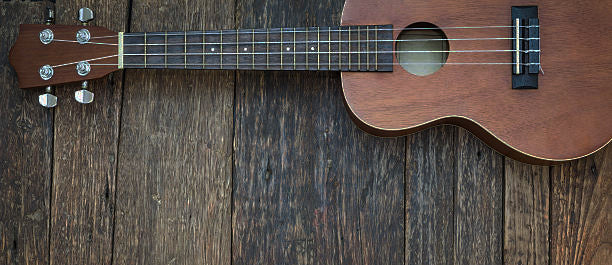Tips on playing the dreaded Open E Chord on Ukulele.
The only way to learn to dive is to climb the tower and jump into the pool, get out, climb the tower and jump again, every time it becomes less 'belly flop' and more 'graceful swan'.
The Open E chord shape on Uke is a real pain in the backside, on Guitar, it is so easy, but on Uke no way. If you really want to learn the open E, and I highly recommend you give it a crack then practice daily using the 'Easy chord / Hard Chord method' is a way to do it.
Ah, the three Notes of the E Chord, the E, the G# and B. It is one of life's funny accidents that the GCEA tuning of the Ukulele usually makes most chords simple and easy to finger and play.
Yet Ukes GCEA tuning throw's the E Chord under the bus when it comes to combining E G# and B to make the E Chord. It makes Barre Chords look easy by comparison.
Two ways to fret the E G# and B notes to make an open E Chord on the Ukulele.


HOW TO DO IT
- Choose an easy chord as your jumping off point maybe an Am or C or G as your starting point, a chord that you know backwards and is truly "easy" for you.
- Play 4 slow and steady down strokes then move to the E.
- Try Not to break the steady downstroke rhythm.
- Even if your fingers are not all in the right positions to form the E chord keep strumming!
- You have 4 downbeats to wiggle your fingers into position.
- Then return to the Easy chord.
- Every time you move from the Easy Chord to the Hard chord you get to try again, and each time you will get a little better. You will land your fingertips better, you will have to think less and wiggle correct less.
- Be the Swan ;-)
WHAT TO BE MINDFUL OF
- Really concentrate and look at your fingers and see if you can plot a course for each finger to transition to the E.
- Look at which finger must move first, what finger lands first etc.
- The aim is to avoid a move to the "neutral" all fingers off the uke 'flappy bird' during the transition.
- Keep them close as possible to the fretboard.
- When the transition from Am to E is improving add another starting point Easy chord to your practice. eg try starting from G and see how you move to E.
- Keep adding easy chord starting points.
- Eventually, you will be able to transition to an E chord from any chord.
I have a student who swore blind that the open E was unattainable, she now plays open E
BARRE E Versus OPEN E - THE LESSOR OF TWO EVILS.
The funny thing is people generally dislike Barre Chords, but after trying the open E Chord people find the Barre E is preferable to the Open E for most people anyways (me included).
BONUS CONTENT: I've included some links to videos I've made demonstrating some tips to learn E Barre Chord.
E barre version
https://youtu.be/FyB4FTJ19v8
Tips to Barre
https://youtu.be/FLx5pDj5_s0
Cheers Christopher
P.S. Let me know how you get on with those E chords





